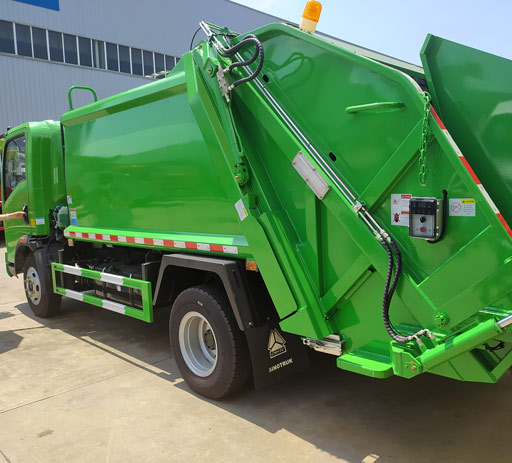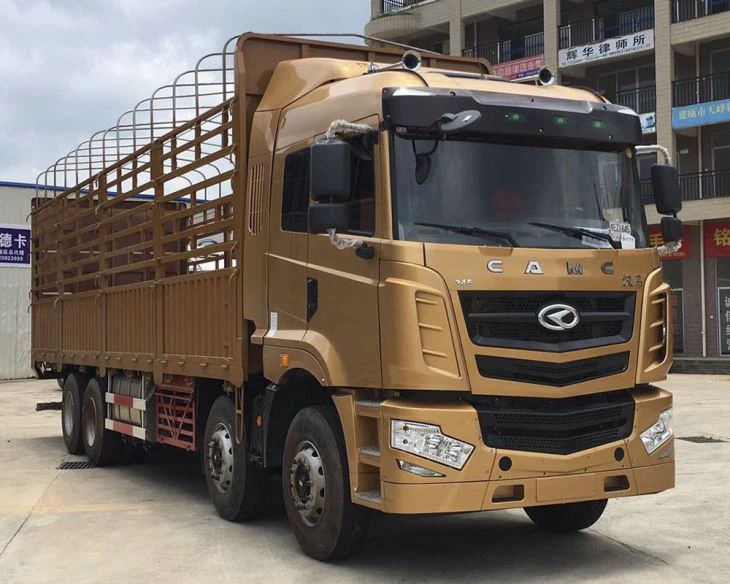Understanding the Future of Waste Management: Automated Trash Trucks

Introduction
In today’s rapidly advancing technological landscape, the way we manage waste is undergoing a significant transformation. One of the most exciting developments in this field is the emergence of automated trash trucks. These vehicles are equipped with sophisticated systems that streamline the waste collection process, making it more efficient and environmentally friendly. This article dives deep into the world of automated trash trucks, discussing their technology, benefits, challenges, and future potential in waste management.
1. What are Automated Trash Trucks?
Automated trash trucks are vehicles designed to collect waste with minimal human intervention. They utilize hydraulic systems, cameras, and sensors to identify, lift, and empty trash bins without requiring a worker to leave the driver’s seat. This automation greatly enhances operational efficiency, reduces labor costs, and minimizes physical strain on workers.
1.1 The Technology Behind Automated Trash Trucks
The technology that powers automated trash trucks includes various components:
- Hydraulic Systems: These systems enable the lifting and tipping of waste containers into the truck’s hopper.
- Cameras: High-resolution cameras assist in identifying the location of bins and can also help in ensuring safe operation.
- GPS and Mapping Systems: These technologies provide optimal routing information, allowing for more efficient waste collection schedules.
2. Benefits of Automated Trash Trucks
Automated trash trucks offer a wide range of advantages for municipalities and waste management companies alike. Some of the most notable benefits include:
2.1 Increased Efficiency and Productivity
With fewer workers needed for collecting waste, automated trucks can complete routes more quickly. Automation also reduces downtime during multiple pickup stops.
2.2 Improved Safety
By minimizing human interaction with waste collection, automated trash trucks significantly reduce the risk of injuries that often occur in manual collection processes.

2.3 Cost Savings
Although the initial investment in automated trucks can be steep, municipalities can save money over time due to reduced labor costs and improved operational efficiencies.
3. How Do Automated Trash Trucks Work?
The operation of automated trash trucks involves several key steps:
3.1 Route Planning
Before the collection starts, the truck’s GPS system plots the most efficient route based on the locations of the bins.
3.2 Bin Identification
Once on the route, on-board cameras scan for designated trash containers, ensuring that the trucks only approach bins that need servicing.
3.3 Automated Collection
When the truck reaches a bin, hydraulic arms extend to lift and empty it into the truck’s hopper, often minimizing the amount of spillage.
3.4 Monitoring and Data Collection
These trucks usually come equipped with IoT technology that allows for real-time monitoring and data collection, enabling better management of waste disposal resources.
4. Challenges and Considerations
Despite their many benefits, automated trash trucks also face several challenges that must be addressed:
4.1 Initial Investment Costs
The cost of purchasing automated trucks can be considerable, which may deter smaller municipalities from making the switch.

4.2 Maintenance and Technical Issues
Like any specialized machinery, automated trash trucks require regular maintenance and can be subject to technical problems, leading to potential delays in waste collection.
4.3 Infrastructure Adaptation
Not all communities have the infrastructure necessary to support the operations of automated trucks, such as appropriate roadways and strategies for parking and maneuvering.
5. Case Studies: Cities Embracing Automation
Several cities worldwide have already implemented automated trash collection systems and report numerous positive outcomes. Here are a couple of examples:
5.1 San Diego, California
San Diego introduced automated trash trucks in 2012, resulting in a quicker and safer collection. The city saw a significant reduction in labor costs and improvement in service frequency.
5.2 Stockholm, Sweden
Stockholm invested in a fleet of automated trucks to align with its sustainability goals. The city reports less noise pollution and a decrease in carbon emissions due to more efficient routing and reduced fuel consumption.
6. Future of Automated Trash Trucks
The future of automated trash trucks looks bright, with advancements continually being made. Innovations such as robotic arms, artificial intelligence, and machine learning are being explored to enhance the functionality and efficiency of these systems further.
6.1 Integration with Smart City Initiatives
As cities move toward smart city initiatives, automated trash trucks will play a critical role in integrating waste management into the larger framework of urban sustainability.
6.2 Potential for Autonomous Operation
Future iterations of automated trash trucks may operate entirely autonomously, reducing the need for a human driver and further increasing efficiency.
7. Practical Tips for Implementing Automated Trash Collection

For municipalities considering the implementation of automated trash trucks, here are some practical tips:
7.1 Conduct Feasibility Studies
Before investing in automated trucks, conduct thorough feasibility studies to understand the unique needs and logistics of your city.
7.2 Engage with the Community
Open a dialogue with local residents to gauge their concerns and expectations regarding automated waste collection.
7.3 Pilot Programs
Start with a pilot program to evaluate the performance of automated trucks in real-world conditions before committing to a full rollout.
8. FAQ Section
8.1 What are the advantages of using automated trash trucks?
Automated trash trucks offer increased efficiency, improved safety, and cost savings, making waste collection more streamlined and effective.
8.2 How do automated trash trucks prevent accidents?
With reduced human interaction, automated trash trucks decrease the risk of worker injuries typically associated with manual collection, and onboard technologies help with accurate operations.
8.3 Are automated trash trucks environmentally friendly?
Yes, automated trucks can be more environmentally friendly due to efficient routing, which minimizes fuel consumption and emissions compared to traditional waste collection methods.
8.4 What cities currently use automated trash collection?
Several cities, including San Diego, California, and Stockholm, Sweden, have successfully implemented automated trash collection, reporting improvements in efficiency and safety.
8.5 What challenges do cities face with automated trash collection?
Challenges include high initial investment costs, potential maintenance difficulties, and the need to adapt existing infrastructure to accommodate automated systems.
8.6 Will automated trash trucks replace all waste collection workers?
While automated trash trucks will likely reduce the number of workers needed for collection, human oversight will still be essential for certain tasks, making complete replacement unlikely.
